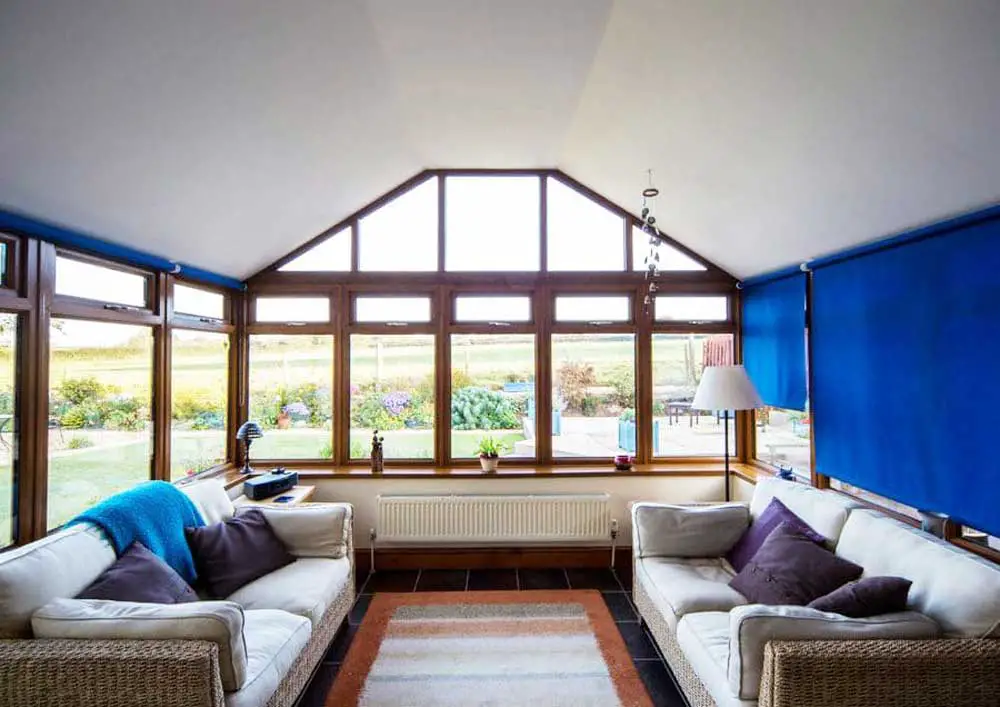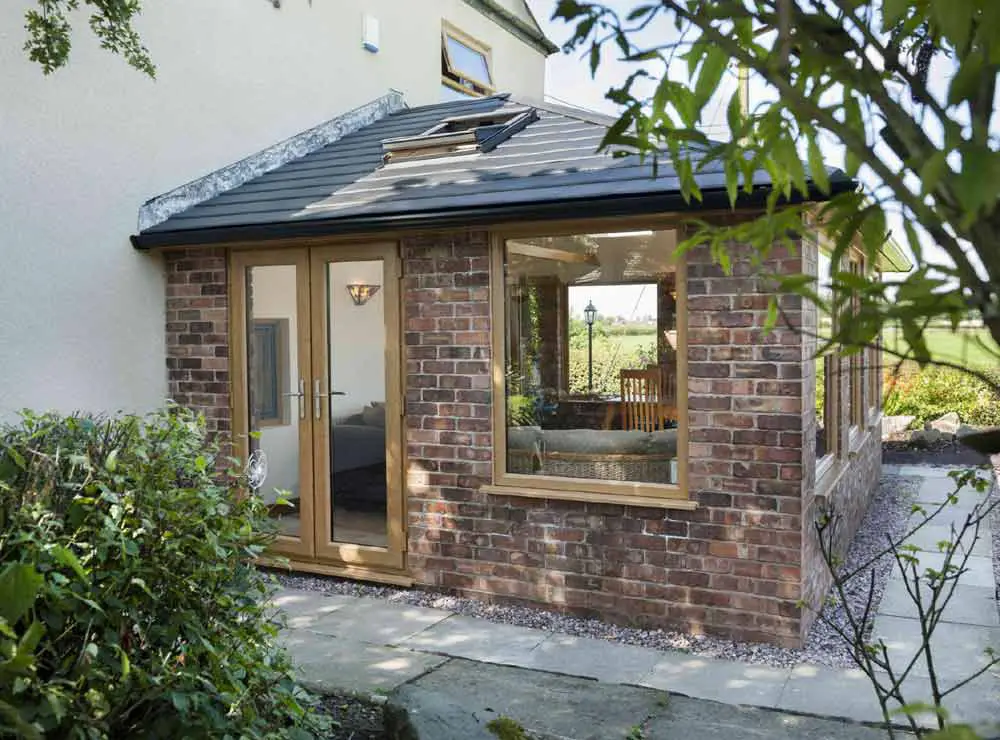Homeowners in the UK who are considering adding a conservatory to their property often come across references to the "4 year rule". But what exactly does this rule mean and what implications does it have if you want to build a conservatory? This article provides a detailed explanation of the 4 year rule, its purpose, and what it means for your conservatory plans.
What is the 4 year rule?

The 4 year rule for conservatories refers to a guideline applied by local councils regarding home extensions, including conservatories. Essentially, it states that if an existing house extension was built less than 4 years ago, the council has the right to refuse permission for further extensions, including building a new conservatory.
So in simple terms, if your home already had an extension like a garage office conversion or loft conversion completed less than 4 years ago, getting approval for adding a conservatory soon after may be more difficult and subject to refusal.
From my knowledge of this subject, the logic behind this rule is that councils don't want properties to be continually extended, adversely impacting neighbours or changing the character of the area. So the 4 year gap is designed to limit this, allowing just one significant extension roughly every 4 years.
Why was the 4 year rule introduced?
The main purpose behind the introduction of the 4 year rule for home extensions was to give councils more control over protecting local amenity and character. Specifically, it enables them to prevent properties being overly extended or ending up out of proportion with surrounding houses due to relentless extensions close together.
Without this rule, there was concern that the space between houses could be eroded through continuous extensions, blocking natural light or spoiling established character. The 4 year gap therefore allows for one reasonable extension whilst controlling over-development.
So in most cases, the rule is applied positively to strike a balance between homeowners' desire to extend, and preserving what makes an area special.
Does the 4 year rule apply to all conservatories?

The short answer is no - there are certain exemptions where the 4 year rule for conservatories and extensions does not apply. These include:
- Porches - Small porch-type structures often don't fall under permitted development rules.
- Some rear extensions - Single story rear extensions below certain maximum size limits.
- Outbuildings - Freestanding buildings not directly joined to the house.
Additionally, as conservatories are often less imposing than permanent brick extensions, many councils are more flexible on the rule if yours would fit sympathetically.
So while all applications are judged on their own merits, if your conservatory falls under permitted development rights and suits the property/area, it should still be possible even within 4 years of previous work.
Visit pureconservatories.co.uk in Chester for a great quote early on if planning a conservatory that needs council approval.
When does the 4 year countdown start?
If you have completed a previous extension at your home, a key question is when does the 4 year time period begin before which another conservatory or extension application may be declined?
In most cases, the 4 years is counted from the date building regulations sign off was granted for the previous extension by the local authority.
So if your office loft conversion was fully signed off on 31st March 2018 for example, the countdown would start from this completion date - meaning another extension or conservatory application before 1st April 2022 could be restricted by the 4 year rule.
Proof of building regulation sign off completion and dates should be available from either your local council building control department or approved inspector.
Can an application still be refused after 4 years?

It is important to note that even once the 4 year period has passed since any previous extension completion, councils can still potentially refuse subsequent development applications on other grounds.
So while the 4 year rule itself no longer applies post-deadline, factors like unsuitable design, inappropriate proportions or negative impact on neighbouring properties could still see an application rejected by planning departments.
Equally, it may be harder to get approval within a conservation area for example - so the design needs sympathetically suit the building age and surroundings regardless of when any earlier extensions were built.
Essentially, passing the 4-year expiry removes one potential hurdle but does not guarantee immediate permission. Other relevant factors will always apply.
How strictly is the 4 year rule applied?
Although many councils broadly stick to rejecting extension proposals that fall within 4 years of earlier development, some flexibility exists in how rigidly the rule is enforced across certain situations or development types.
In particular, more minor single story extensions that fall under Permitted Development rules but still involve some planning input due to neighbour notifications can sometimes be reviewed on a case by case basis by councils. This means approval within the 4 years may still be possible if the extension is considered proportionate and unobtrusive.
There are also instances where highly sympathetic and well-designed conservatory proposals that suit the property beautifully have been permitted even inside the 4 years - if the council feels they will enhance rather than negatively impact the area's aesthetics or amenity.
Equally conservatory builds adjoining detached properties set well back from boundaries can reduce objections about loss of natural daylight compared to controversies sometimes caused by rear extensions.
As a result, while often applied strictly, some flexibility allows the rule not to completely prohibit well-planned proposals even inside 4 years if a strong case is put forward during planning.
Are there ways to improve chances of approval within 4 years?

Given approvals for extensions within 4 years may be harder but are occasionally granted in mitigating circumstances, what can improve your chances if hoping to carry out additional works before your deadline expires?
Some tactics that I advise you consider include:
- Careful design - Producing a sensitively thought through design tailored specifically to your home's architecture and surroundings has more chance of being permitted that generic off the shelf plans.
- Pre-application advice - Council planning departments often offer pre-app services to review initial proposals. Getting their early feedback means you can tweak your plans to address any initial issues they highlight.
- Permitted development - Checking if your extension falls under permitted rules requiring only neighbour notification removes full planning hurdles. Small rear builds under set limits can qualify.
- Material support - Photos, heritage/character statements, computer visuals or samples can back up why your design needs permission to suit the property despite the 4 year rule.
- Making your case - Put time into crafting a solid planning statement explaining why your extension should be allowed as an exception. Point out any site constraints, design merits or sensitivities.
Essentially taking some extra care and working positively with planners improves the chances of a discretionary approval - it shows you have thoughtfully minimised impact at a difficult site.
Are there any ways to bypass the rule?
As I have outlined already, permitted development allowances providing development rights without requiring full planning applications are one way to bypass more stringent assessment of the 4 year rule for some modest extensions.
But additionally, a potential option involves actually initiating any further extension works just before the 4 year deadline relating to previous works kicks in.
By starting the footings or foundations within the final 4 years since original completion but ensuring the build itself continues beyond the 4 year cutoff, the rule nominally no longer applies as far as planning departments are concerned. So this can be an effective way round the restrictions the timeframe imposes in some circumstances.
That said, this still requires careful planning to ensure work has commenced inside 4 years but isn't completed until afterwards, along with ensuring disruption is minimised. And you may need evidence like signed contracts or invoices to confirm works demonstrably began inside the deadline to satisfy planning conditions if challenged.
But exploiting technical commencement of works before 4 years may succeed if timed strategically, even if further progress then continues beyond the deadline.
Dispelling myths around the 4 year rule

Image credit: stormclad.co.uk
Like any planning related issue, there are a few common misconceptions surrounding the detail or implications of the 4 year rule that are worth correcting to avoid confusion:
- It doesn't apply to all councils - Some local authorities have introduced similar policies but don't specify a defined time limit. However most refer to 4 years explicitly.
- Internally changing existing extensions doesn't count - Replacing windows, electrics or plaster in a past extension doesn't class as new development so doesn't impact further plans.
- The rule applies per property not applicant - Previous extensions under past owners still count - the 4 year limit relates to what has happened to the property itself.
- It's not strictly 4 years in all cases - Some sites or extensions have approval conditions insisting on a longer gap before further works. But 4 years is typical.
So in summary, grasping these details provides clarity on how and why the rule exists, along with where potential flexibility occasionally comes into play dependant on extension design quality and mitigations.
My Final Thoughts
In most cases, wanting to carry out significant new building works within 4 years of previously extending your property will rightly trigger council scrutiny and frequent rejection due to the established planning rule now widely applied across the UK.
And in many ways this rule broadly serves its objectives in encouraging homeowners to carefully consider the number and scale of extensions carried out over a period of time - rather than relentlessly maximising development with potentially negative impacts.
However with imaginative design tailored specifically to site conditions and demonstrating sensitivity to council objectives, the rule does not implement a total moratorium on possibilities even inside 4 years as exceptions can be carved out. Especially where permitted development rights or discretional flexibility might allow modest but important home improvements sympathetic to an area's aesthetics.
So while new conservatory or extension plans don't have an automatic right to proceed less than 48 months after previous large-scale works, all options shouldn't be assumed blocked immediately when exploring your potential development avenues further. Council planners applying nuanced site judgement can provide workable solutions in some situations upon request.



 Author: Matthew Chiappini
Author: Matthew Chiappini